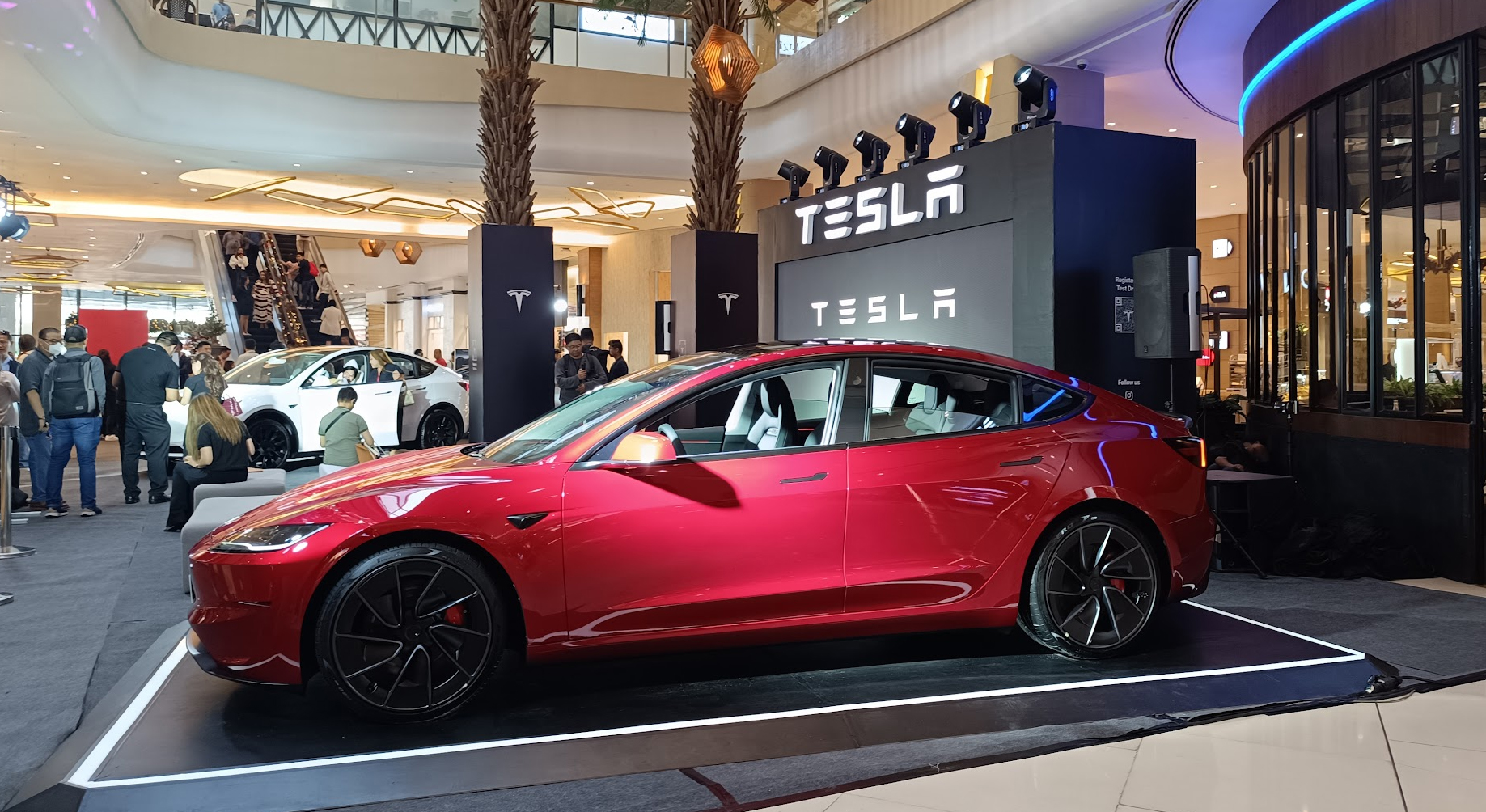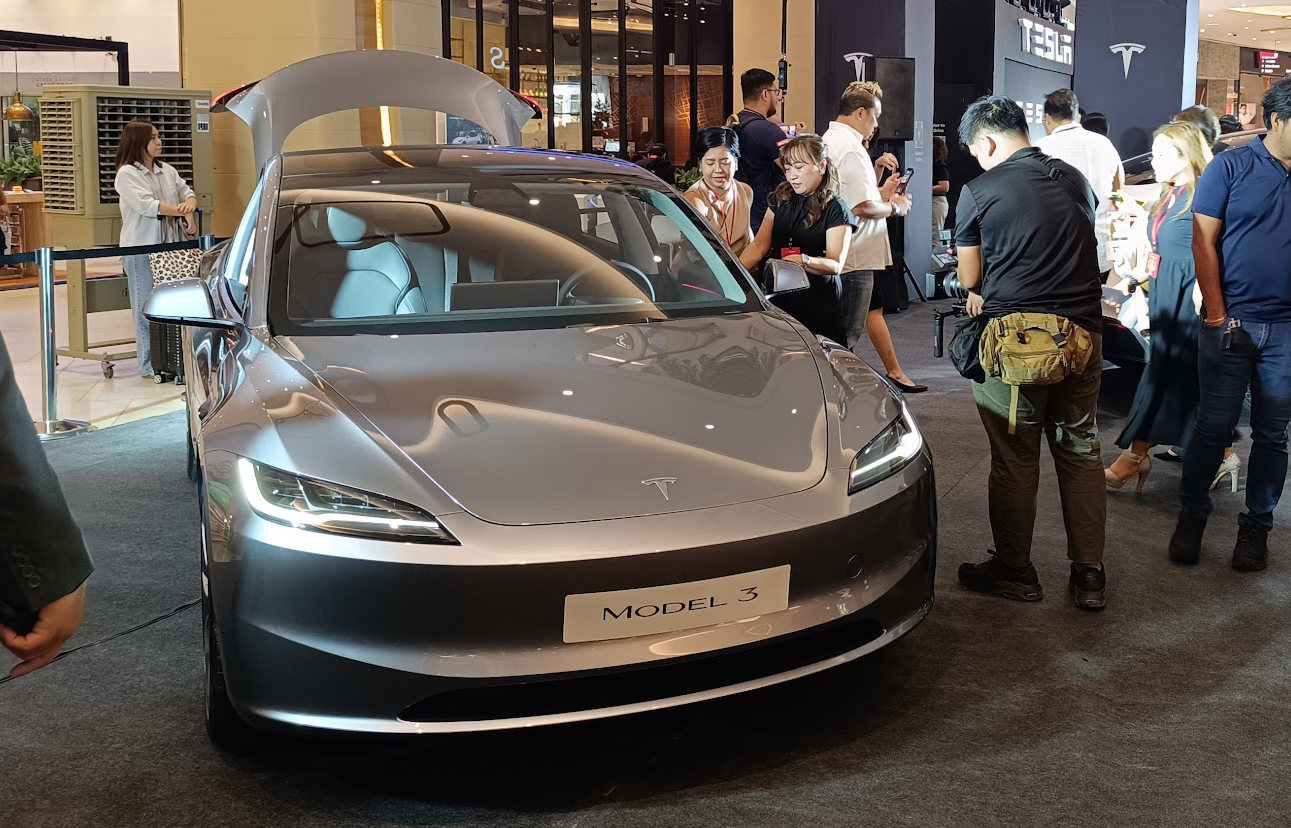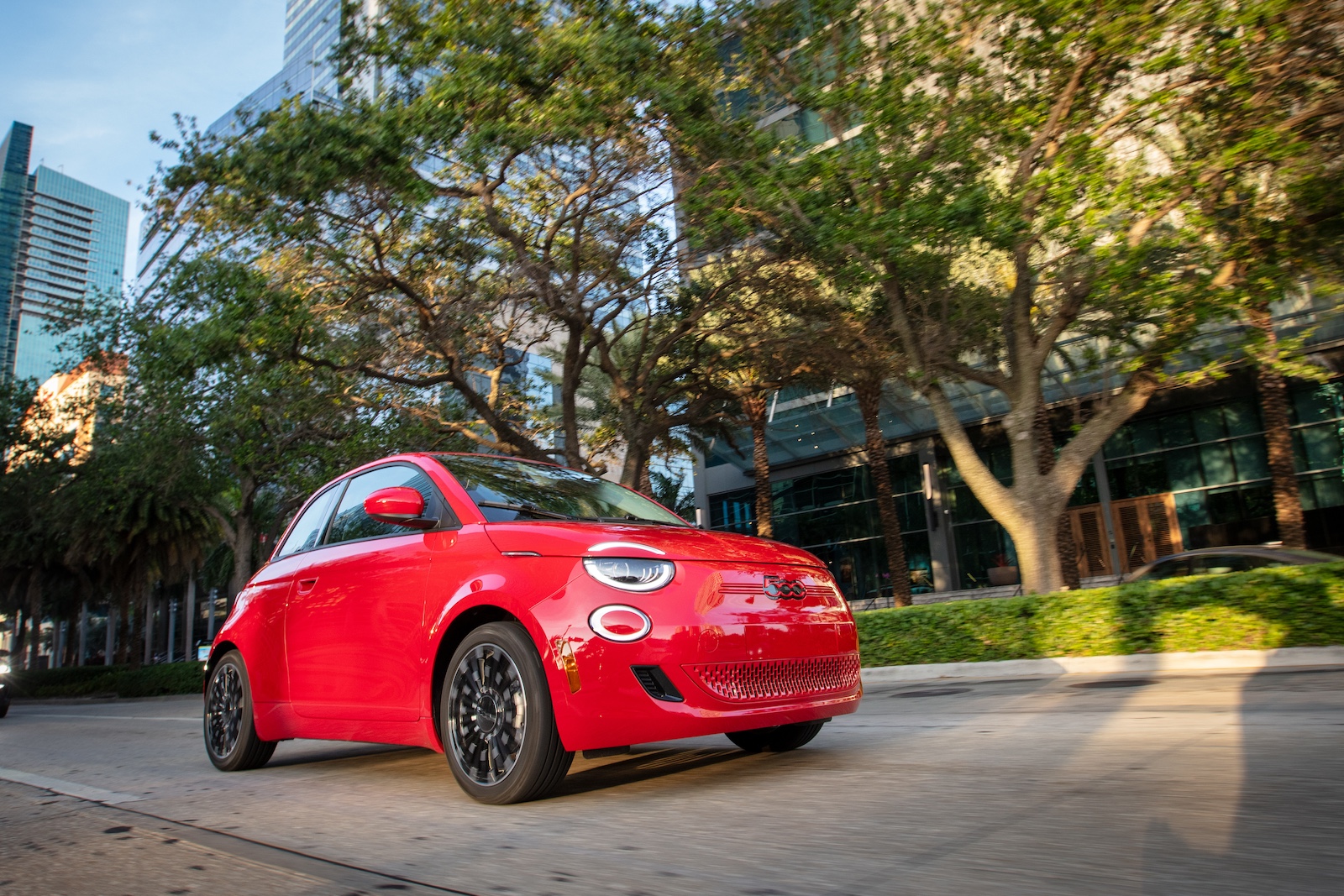Sign up for daily news updates from CleanTechnica on email. Or follow us on Google News!
Tesla Inc. has officially launched its first showroom in the Philippines.
I waited for two weeks after the launch last November 8 because I wanted to see how the Philippine EV market would take on the American-made electric vehicle before making this report.
So far, according to sources inside Tesla, both of whom requested anonymity, around 78 sales commitments have been made and over 200 sales requests have been listed since the showroom opened. Of those who made purchase commitments, there are about 12 already paid up and deliveries are expected in early 2025. On opening day, the sales bell rang thrice, signaling two people purchased Model Ys and one bought a Model S outright.
To fill the orders, the vehicles will be delivered from Tesla’s Gigafactory Shanghai.
Tesla did not partner with any local distributor. The company operates right out of its ASEAN regional headquarters in Cyberjaya, Malaysia.
Tesla Experience Center
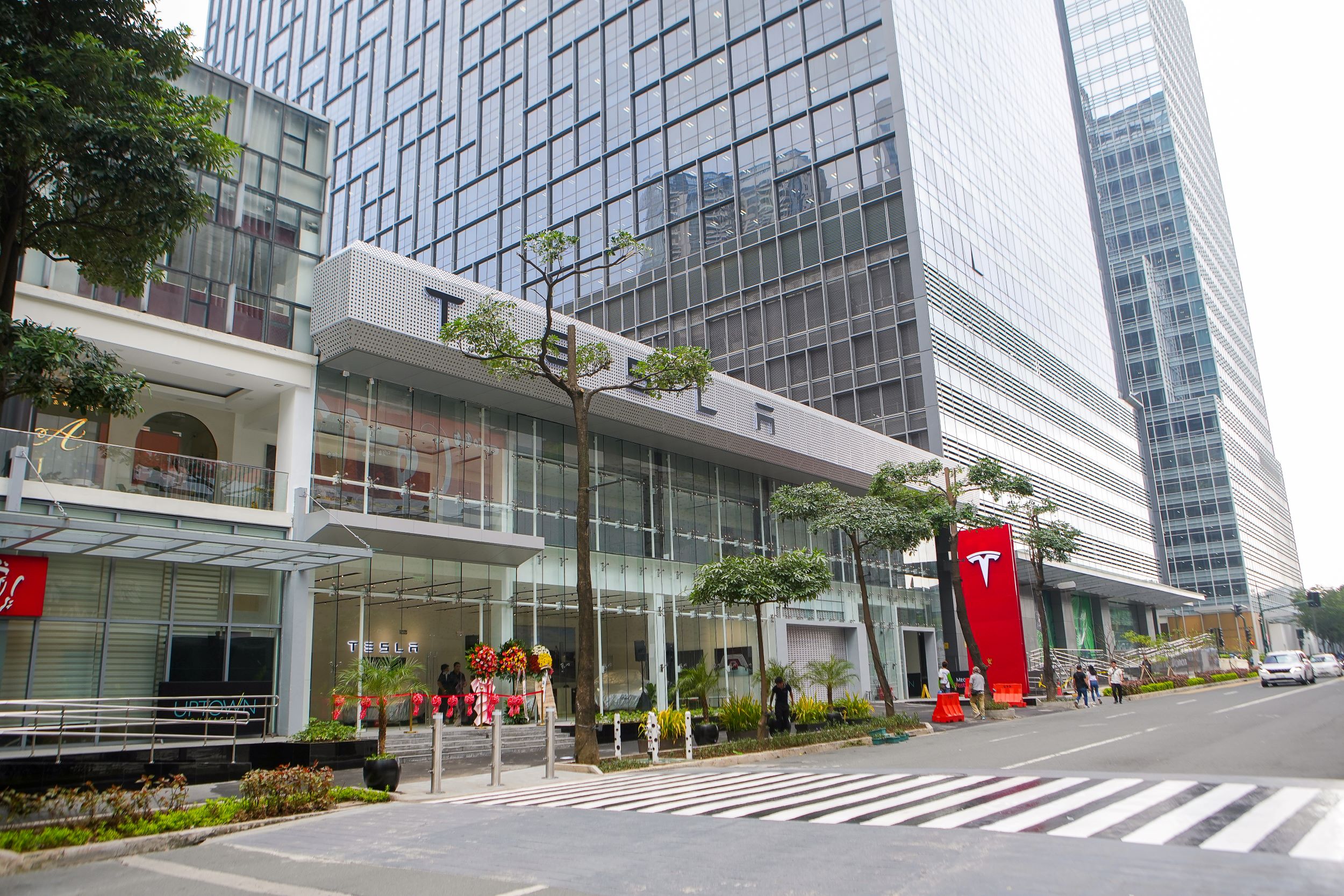
Tesla does not want to call its dealership a showroom or a dealership. Its marketers insist on calling it the the Tesla Experience Center, which is “a comprehensive solution for EV ownership, including sales, service, and delivery.” It also launched its Design Studio where customizing vehicle orders is done. Overall, would-be owners are expected to be “treated like royalty.”
Tesla Regional Director Isabel Fan, Executive Vice President and Chief Strategy Officer of Megaworld Corp. Kevin Tan, and government officials led by Secretary Frederick Go of the Office of the Special Assistant for Investment and Economic Affairs (OSAPIEA) were there for the ribbon-cutting ceremony of the new experience center, which is located in a snazzy mall called Uptown Parade in Bonifacio Global City (BGC) in Taguig, the ritzy part of Manila.
The Megaworld Group is a real estate company in the Philippines and sees its key involvement in electric mobility as setting up charging stations in parking areas in and around its properties all over the country.
“Tesla is officially in this country, supporting our customers, our partners,” said Fan during the launch. Tesla will operate from its regional office and has established a local team to manage sales and service. She probably said this because previous to this official launch, Teslas were sold via gray-market importers. One company brought used Teslas from China and the US, and sold these vehicles in Manila.
These “experiments” may have served as unofficial market testing for Musk’s EVs.
Superchargers
Persistent questions to the Tesla team were around charging.
“Tesla Superchargers will be located all over our malls and our properties,” Tan said. “The Supercharging service will be pay-per-use at P19 per kilowatt-hour. Currently, 4 Superchargers are being installed in the Basement 2 parking of Uptown Mall, exclusively for Tesla vehicles,” says Kevin Tan, who also said that a typical full charge will cost around P1,140 ($19).
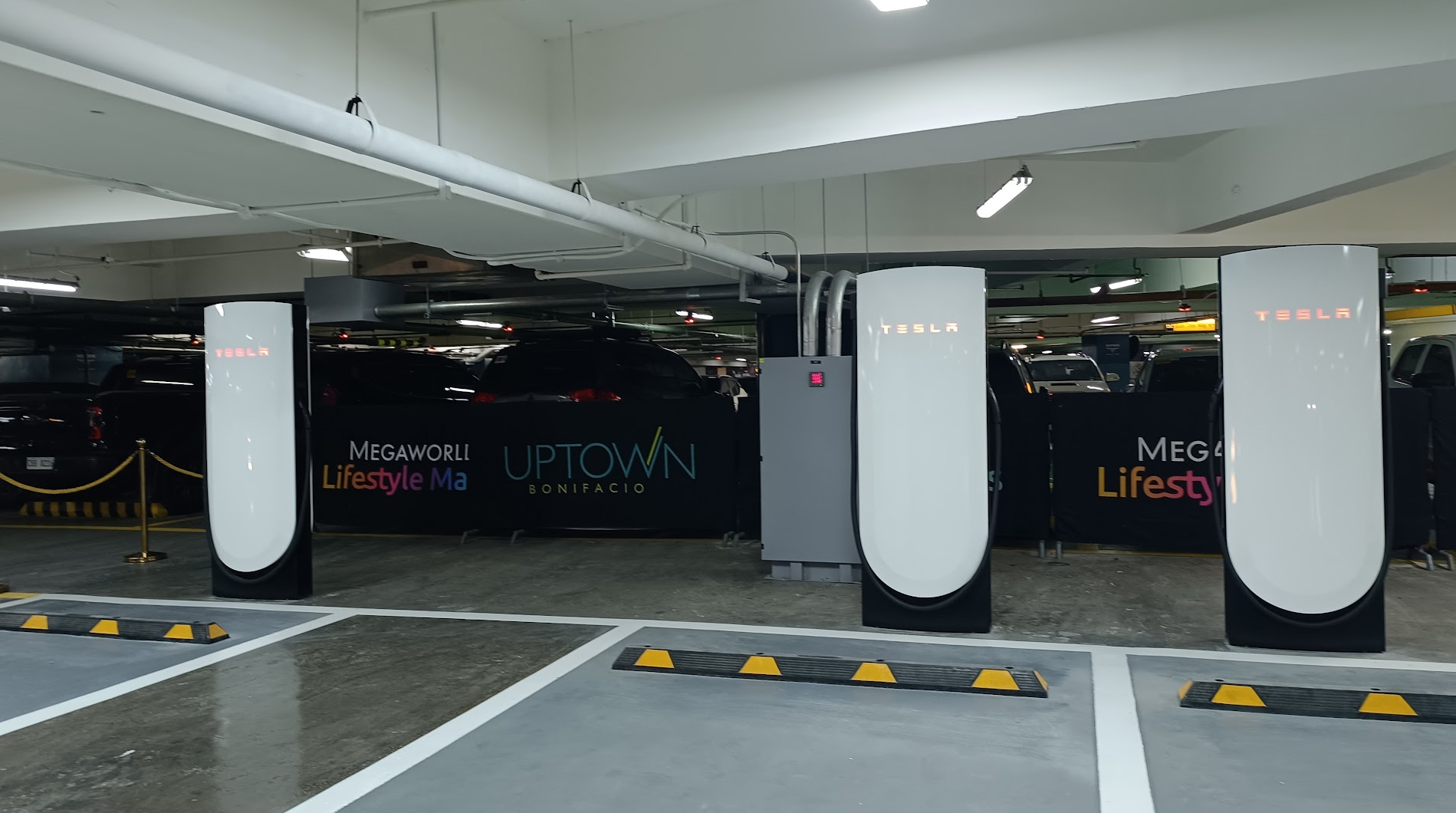
The very first recorded Tesla in the country is owned by energy tycoon Manny V. Pangilinan, who owns the Manila Electric Company (Meralco). His Model S cost about P4.5M ($77,800) in 2013. The first Cybertruck was imported to the country just last September, costing about P10 million ($170,000), more than $60,000 over the sticker price in the US. The price difference is mostly because of shipping fees because taxes for all electric vehicle imports in the country are 0%, (yes nil, zero, nothing), at least until 2028.
There are just over 200 charging stations in the Philippines to cater to nearly 12,000 electric vehicles. Most of these are located in malls. Though, Shell has eight ReCharge stations. Mall chargers can accommodate only about 4 vehicles at at time. A lot of the charging equipment is $22,000 or less, though.
Model Y and Model 3
Tesla launched two models here: the Model Y and Model 3.
The Model Y starts at P2.369 million ($41,300) for the rear-wheel-drive variant and offers spacious interiors with up to 2.1 cubic meters of cargo space. There are two additional variants: the P2.689 million ($46,400) “Long Range,” with a range of up to 533 km on a single charge, and the “Performance” variant, which can accelerate from 0–100 km/hr in 3.7 seconds.
The Model 3, starting at P2.109 million ($36,362), features an aerodynamic design and a range of 513 km. The “Long Range” variant is priced at P2.489 million ($42,913) and offers an extended range of 629 km, while the “Performance” Model 3 can accelerate from 0 to 100 km/hr in 3.1 seconds.
“It’s the most affordable. I don’t see any car in this range or this pedigree with this kind of pricing. It’s going to wow the market,” said Fan.
Finally made in the USA. Or is it?
“The personification of good quality vehicles is still biased to American cars,” said Ferdinand Raquelsantos, Chairman of the Electric Vehicle Association of the Philippines. “Filipinos trust American car brands. Tesla will give a breath of fresh air in the EV market now dominated by Chinese brands. He believes that the presence of another EV brand like Tesla “will entice some people to shift to EV and likewise adopt to this current technology.”
“It’s about time there is a non-Chinese electric vehicle available,” commented one lifestyle blogger who didn’t realize Teslas for the Philippines will be sourced from the Shanghai Gigafactory.
The first deliveries of the Model 3 and Model Y are scheduled for early 2025.
Anticipation and interest?
Even before the Tesla Experience Center was opened, the brand had already captured the imagination of many Filipinos.
The yet-to-be confirmed buzz surrounding it, its innovative technology, and its association with Elon Musk fueled significant interest. YouTube is filled with yet to be confirmed stories that Musk is building a huge mansion that faces the Pacific Ocean somewhere in the north of the country and even set up a battery plant to take advantage of the rich chrome and nickel resources of the Philippines.
Both stories should be considered disinformation until such time there is clear evidence from Musk himself that this will happen.
Have a tip for CleanTechnica? Want to advertise? Want to suggest a guest for our CleanTech Talk podcast? Contact us here.
Sign up for our daily newsletter for 15 new cleantech stories a day. Or sign up for our weekly one if daily is too frequent.
CleanTechnica uses affiliate links. See our policy here.
CleanTechnica’s Comment Policy

